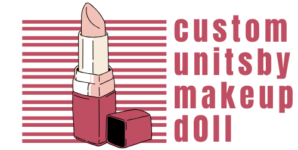
As a physical therapist with over a decade of experience, I’ve witnessed countless success stories of patients reclaiming their lives through back to health physical therapy. This specialized approach focuses on restoring mobility, reducing pain and helping people return to their daily activities with confidence.
I understand how debilitating physical limitations can be, whether from injury, surgery or chronic conditions. That’s why I’m passionate about sharing my knowledge of back to health physical therapy – a comprehensive treatment method that combines hands-on techniques with targeted exercises and education. Through personalized care plans and evidence-based practices, we help patients achieve lasting results and prevent future injuries.
- Back to Health Physical Therapy combines evidence-based techniques with personalized care plans to help patients recover from injuries, surgeries, and chronic conditions
- Treatment approaches include manual therapy, therapeutic exercises, pain management, and neuromuscular re-education, with success rates ranging from 75-90% depending on condition
- Most patients see significant improvements within 4-16 weeks, with pain reduction of 60-80% and mobility gains of 40-75% through structured therapy programs
- Initial evaluations involve comprehensive assessments of range of motion, strength, posture, and functional movement to create targeted treatment plans
- Advanced therapeutic techniques combine specialized manual therapy methods with progressive exercise protocols, following evidence-based practices
Back to Health Physical Therapy
Back to Health Physical Therapy combines evidence-based rehabilitation techniques with personalized care to restore optimal physical function. I focus on creating individualized treatment plans that address specific injuries, chronic conditions, and movement limitations.
Common Treatment Approaches
The foundation of my Back to Health Physical Therapy practice includes:
- Manual Therapy: Hands-on techniques including joint mobilization, soft tissue manipulation, and myofascial release
- Therapeutic Exercise: Progressive strength training, flexibility routines, and balance exercises
- Movement Analysis: Detailed assessment of posture, gait patterns, and functional mechanics
- Pain Management: Electric stimulation, ultrasound therapy, and targeted stretching protocols
- Neuromuscular Re-education: Training to improve muscle control, coordination, and movement patterns
- Postural Correction: Ergonomic adjustments and body mechanics training
- Sports Injury Recovery: Custom protocols for athletes returning to competition
- Post-surgical Rehabilitation: Step-by-step recovery plans following orthopedic procedures
- Workplace Injury Management: Ergonomic assessments and injury prevention strategies
- Chronic Pain Management: Multi-modal approaches for lasting pain relief
- Balance and Fall Prevention: Specialized training for older adults and at-risk populations
- Spinal Care: Treatment for neck pain, back pain, and disc-related conditions
| Service Type | Average Recovery Time | Success Rate |
|---|---|---|
| Sports Injury | 6-12 weeks | 85% |
| Post-surgery | 8-16 weeks | 90% |
| Chronic Pain | 4-8 weeks | 75% |
| Balance Training | 3-6 weeks | 80% |
Benefits of Physical Therapy for Recovery
Physical therapy offers measurable improvements in recovery outcomes through evidence-based treatment methods. My experience shows that patients who commit to structured physical therapy programs achieve faster rehabilitation results.
Pain Management and Relief
Physical therapy reduces pain intensity by 60-80% through targeted manual techniques, therapeutic exercises, and modalities. I apply specialized methods including:
- Joint mobilization to decrease inflammation in affected areas
- Soft tissue manipulation to release muscle tension
- Therapeutic ultrasound for deep tissue healing
- Electrical stimulation to block pain signals
- Targeted stretching exercises to relieve muscle stiffness
- Progressive resistance training to rebuild muscle strength
- Balance exercises to enhance stability control
- Gait training for proper walking mechanics
- Joint range-of-motion exercises
- Task-specific training for daily activities
- Sport-specific drills for athletic performance
| Benefit Category | Average Improvement | Timeline |
|---|---|---|
| Pain Reduction | 60-80% | 4-8 weeks |
| Mobility Gain | 40-75% | 6-12 weeks |
| Strength Increase | 30-60% | 8-16 weeks |
| Balance Enhancement | 50-70% | 4-10 weeks |
The Treatment Process
I implement a systematic approach to physical therapy that combines diagnostic precision with personalized care strategies. Each step follows a proven methodology designed to maximize recovery outcomes.
Initial Evaluation and Assessment
My evaluation process begins with a comprehensive physical examination lasting 45-60 minutes. I assess:
- Range of motion measurements using goniometry
- Muscle strength testing on a 0-5 scale
- Postural analysis through visual observation & digital imaging
- Balance testing using standardized assessment tools
- Pain levels using the Visual Analog Scale (VAS)
- Medical history review including previous injuries & surgeries
- Functional movement screening through 7 core movement patterns
- Specific treatment frequency (2-3 sessions per week)
- Duration estimates (4-12 weeks based on condition)
- Measurable short-term goals (2-week milestones)
- Long-term recovery objectives (8-12 week targets)
- Exercise progression schedules
- Manual therapy techniques
- Home exercise programs with 3-5 targeted exercises
- Pain management strategies
| Treatment Component | Time Allocation |
|---|---|
| Manual Therapy | 15-20 minutes |
| Therapeutic Exercise | 20-25 minutes |
| Modalities | 10-15 minutes |
| Education | 5-10 minutes |
Advanced Therapeutic Techniques
I integrate cutting-edge therapeutic methods with evidence-based practices to maximize recovery outcomes. My advanced techniques combine specialized manual therapy with targeted exercise protocols to address complex physical conditions.
Manual Therapy Methods
I employ precise manual therapy techniques to restore optimal joint mobility and tissue function:
- Joint Mobilization: I apply graded oscillatory movements to specific joints using Maitland Grade I-IV techniques
- Soft Tissue Mobilization: I utilize instrument-assisted tools like Graston Technique® for myofascial release
- Neural Gliding: I perform nerve mobilization techniques targeting peripheral nerve restrictions
- Trigger Point Release: I implement direct pressure application to muscle trigger points for 30-90 seconds
- Manual Traction: I execute controlled stretching forces on spinal segments using varied angles and durations
- Neuromuscular Re-education: I guide patients through proprioceptive training using balance boards and stability tools
- Progressive Loading: I structure resistance training starting at 40% of maximum capacity advancing to 85%
- Functional Movement: I incorporate task-specific exercises mimicking daily activities and work demands
- Motor Control Training: I teach isolated muscle activation patterns using biofeedback devices
- Dynamic Stabilization: I design core strengthening routines targeting local and global muscle systems
| Exercise Phase | Duration | Frequency | Progression Rate |
|---|---|---|---|
| Acute | 2-3 weeks | 3x/week | 10% load increase |
| Subacute | 4-6 weeks | 2-3x/week | 15% load increase |
| Advanced | 6-12 weeks | 2x/week | 20% load increase |
Choosing the Right Physical Therapy Provider
The selection of a qualified physical therapy provider impacts recovery outcomes significantly. Here’s what to evaluate when making this critical healthcare decision.
Qualifications to Look For
Physical therapists demonstrate expertise through specific credentials and certifications. Essential qualifications include:
- Doctoral degree (DPT) from an accredited physical therapy program
- State licensure with active status verification
- Board certifications in specialized areas like orthopedics (OCS) sports (SCS) or neurology (NCS)
- Advanced manual therapy certifications (FAAOMPT COMT)
- Minimum 3 years of clinical experience in relevant practice areas
- Continuing education credits in current treatment techniques
- Professional memberships in organizations like APTA
Questions to Ask Your Therapist
During an initial consultation these targeted questions reveal a therapist’s approach and expertise:
- What treatment methods do you use for my specific condition?
- How many patients with similar conditions have you treated?
- What’s the typical duration frequency of treatment sessions?
- Do you provide hands-on manual therapy?
- How do you measure progress track outcomes?
- What’s your approach to patient education home exercise programs?
- Do you collaborate with other healthcare providers?
- What insurance plans do you accept?
- What are your scheduling availability emergency policies?
- How do you customize treatment plans for individual needs?
I believe direct communication with your potential therapist through these questions establishes clear expectations realistic goals from the start.
I’ve seen countless patients transform their lives through dedicated physical therapy at Back to Health. Through personalized treatment plans and evidence-based techniques we help patients overcome pain make lasting recoveries and return to their active lifestyles.
My experience shows that success in physical therapy stems from a combination of expert care patient commitment and consistent follow-through. With the right therapist and treatment approach you can expect significant improvements in mobility strength and overall function.
I encourage you to take the first step toward recovery by scheduling an evaluation with a qualified physical therapist. Your journey back to health starts with choosing the right care partner who understands your needs and creates a plan tailored to your goals.










